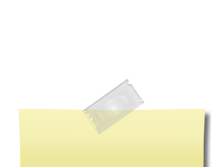Ken Pratt
Ken Pratt: a career in aviation
“I've been an airplane pilot for many years. In fact, I recently observed that my aviation career has spanned portions of five decades (from the early 1970's through the 2020's). And given that the history of manned flight is just barely over a century old, that means I've been flying long enough to have seen quite a bit of aviation history unfold. In fact, I feel like I've had a hand in writing a chapter (or at least a couple pages) in that history book.
“For example, it's hard to believe that it has been over 50 years since Neil Armstrong set foot on the moon in 1969!
“My aviation career was launched courtesy of the United States Government (your tax dollars at work). I was commissioned in the USAF though the ROTC program at Michigan State University (June '71).
“Being affiliated with the military during the late '60's-early '70's was challenging, to say the least. (But that's another story.)
“I was called to active duty shortly after graduation, in September 1971. My initial assignment was a ‘desk job’. The window in my office faced towards the flight line. Every day I could see airplanes coming and going. I felt certain that the guys flying the aircraft were having a lot more fun than I was. Within a few months I volunteered for pilot training. My application was accepted! Pilot training began in July '72 (Vance Air Force Base, OK). I was in the ‘pipeline’, likely headed for Southeast Asia. Basic Air Force pilot training takes 52 weeks of hard work. The following year included specialized training (F-4 RTU). Some 24 months after starting I completed training (June '74). I was now a combat ready pilot, in the F-4, Phantom II. But, by then the Viet Nam war was over so my first assignment was for two years at Clark Air Base in the Philippine Islands. Following that I was sent for a three-year tour of duty in (West) Germany at Ramstein Air Base. At that time, my squadron was sitting air defense alert for NATO, poised to counter the Soviet threat. With our supersonic fighters we could be airborne within 5 minutes (day or night) and be at the "Iron Curtain" minutes later.
“Flying a front-line fighter at supersonic speeds was a real rush! Needless to say, Top Gun is my favorite movie. Like Maverick, I had ‘the need for speed’!
“Following some 8 years on active duty, I elected to return to civilian life. One year later I joined the Michigan Air National Guard as a part-time pilot. For the next 21 years I flew a variety of aircraft (A-7, F-16 and C-130) as a ‘weekend warrior’ stationed at Selfridge Air National Guard Base. I retired from the military in 2001 with 30 years of Federal Commissioned Service. Of all the military aircraft that I had the privilege to operate, the F-16 was, by far, the most challenging and the most rewarding. This single engine, single seat, supersonic, high performance, light-weight fighter is an amazing piece of American technology. Even today, after being in use for over 50 years, it is still held in high regard by frontline forces around the world. The F-16 is in use by more than 25 air forces worldwide.
“Following my discharge from active duty (1979) my civilian career remained in the field of aviation. I spend 8 years in corporate aviation flying business jets, first for Chrysler and then for General Motors.
“Then in 1987 I finally made it to the ‘Big Leagues’ and was hired by Northwest Airlines. Twenty years later the airline industry was struggling to regain profitability and went through a series of bankruptcies, restructuring and consolidations. Northwest Airlines survived the bankruptcy process but was absorbed by Delta Air Lines in 2008.
“During my combined airline career, I flew several different types of aircraft (B-727, DC-9, B-757, B-747 and B-767). These assignments took me all over North America and to many destinations in Europe, Asia and South America. Throughout my airline career I was based in Detroit. So, likely if you traveled through Detroit Metro Airport you may have been on one of my flights. I retired from Delta in 2014.
“During my aviation career I've logged some 24,000 hours of flight time. Some of it at supersonic speeds! Some of it at 100 feet off the deck going 500 knots [575 mph!]. Some of it taking 400 passengers across the North Pacific in the middle of the night. Some of it flying an instrument approach on a dark and stormy night at LaGuardia. Loved every minute of it!
"On September 11, 2001, I was in the middle of a Northwest Airlines flight assignment on a layover in New York City! (But that's another story.)
“In retirement I have kept my hand in aviation. For seven years I flew domestically, as a volunteer pilot, for an NGO called Wings of Hope, based in St Louis, Missouri. In 2018 I spent 6 months flying relief missions in Belize. (But that's another story.)
“My military and commercial flying brought me into contact with numerous service members and veterans. While based at Detroit Metro Airport for my airline job, i saw thousands of soldiers, sailors, airmen and their families come through DTW. It was clear that there was a requirement for a hospitality room to meet the needs of traveling service members, veterans and their families. With the help of numerous dedicated volunteers, the first military lounge called the Michigan Freedom Center was opened in 2011 in the McNamara Terminal, near Gate A43. Four years later the second lounge was opened in the Evans Terminal, near Gate E17. These facilities are staffed by volunteers and supported by donations from individuals and corporations. If you’ve traveled through DTW, you’ve likely seen them. In early 2025 the Michigan Freedom Centers will have served 1 million guests since opening!”

